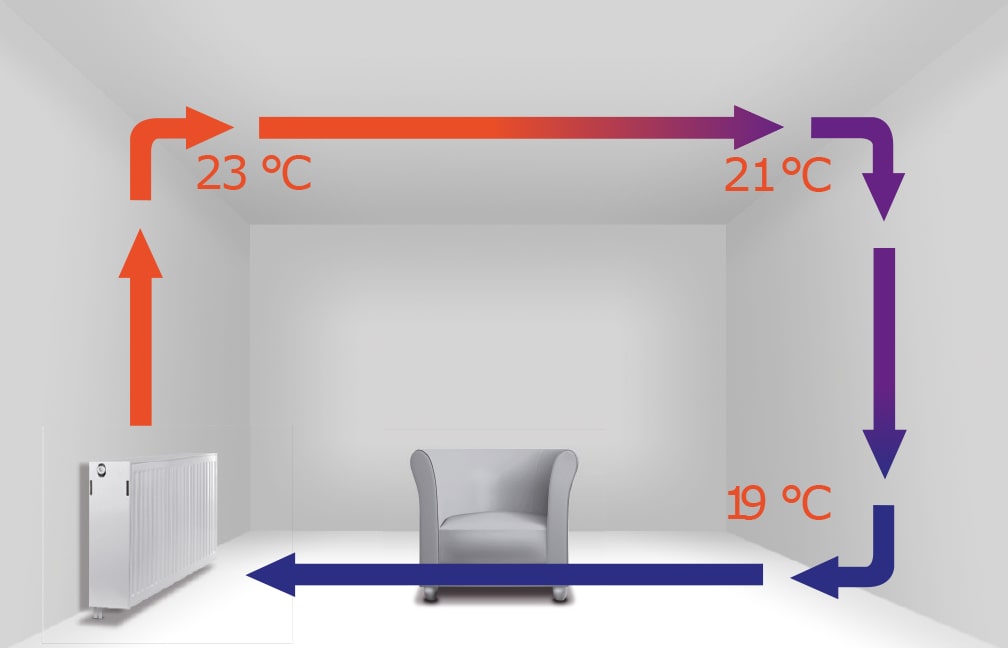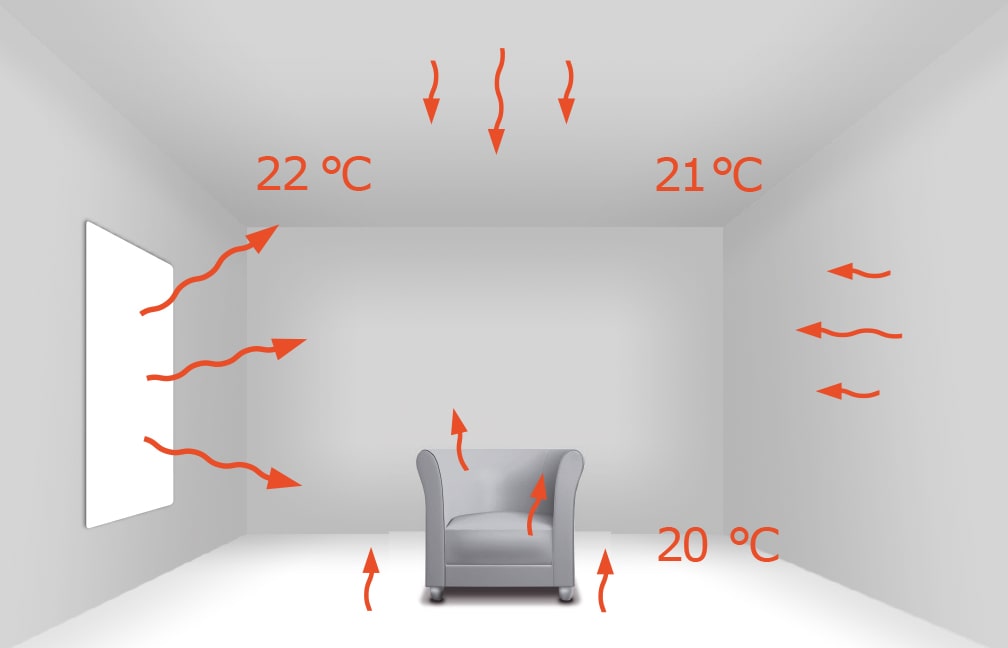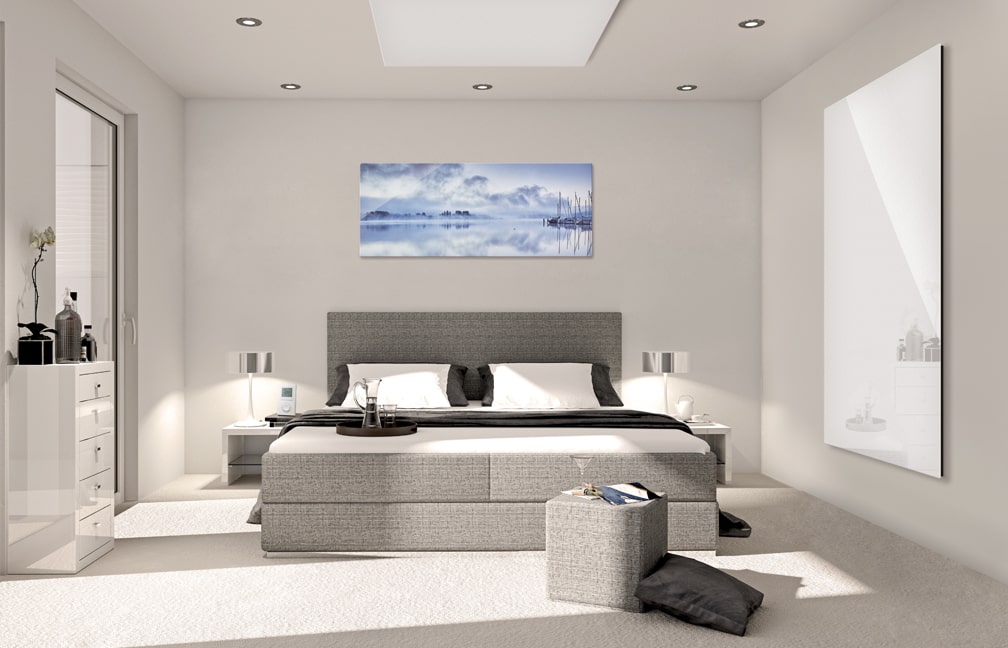HOW DOES INFRARED
HEATING WORK?
The best known infrared heater is our sun. When you walk in the sun on a cold day, you feel the sun’s natural infrared radiation on your skin. Unlike the well-known UV radiation, infrared radiation (IR-C or FIR) is completely harmless to the human body. Traditional heating systems only reach about 10-20% of the infrared radiation. The remaining energy is emitted by convection (hot air). This method is rather cumbersome and not very efficient (as air is a good insulator) and, in addition, it generates a lot of house dust.



THE HEAT RADIATION
Radiant heat, i.e. infrared heat, is absorbed by the walls, floor, ceiling and furniture and other objects in the room. These objects store heat and, in turn, emit some of the thermal energy into the environment. In this way, every object in the room becomes part of the infrared heating system. For example, a south-facing wall is heated by the sun during the day. Hours after sunset, this wall is still warm. The positive heat of the sun (infrared radiation) is stored in the wall. This is the principle on which infrared heating is based.
HEAT THROUGH CONVECTION
With hot air or convection systems, you always need a combination of electricity and oil, or electricity and gas, or electricity to heat an additional element, namely “water”, which is then sent to the radiators through a circuit of water pipes. The ultimate goal is to bring warm air into the room.
Unfortunately, this warm air rises and is not stored anywhere in the surrounding objects and materials such as walls, floors, furniture, etc. Therefore, the rooms have to be particularly insulated in order not to lose this warm air immediately, so that there is very warm air on the ceiling, while there is a much lower temperature on the floor… because of the rising warm air. There is therefore continuous convection in this room.
In older hot air heating systems, combustion always took place in the “burner”. Combustion can only take place if oxygen is extracted from the environment, leaving an extremely dangerous residue in the form of carbon dioxide CO2 or carbon monoxide CO. Toxic and very bad for the environment at the same time. In fact, from the point of view of energy consumption and our environment, it is not interesting!

THE FUTURE IS NOT ABOUT FOSSIL FUELS !
However, this is not the case for heat pumps. Here, in most cases, hot air is also produced, but without the combustion of fossil fuels. However, this is an extremely expensive solution, at least if the calculations are followed to ensure a good return. The question always arises: will it be warm enough in my rooms, such as in the bathroom?
HEAT THROUGH INFRARED RADIATION FIR
( far infrared )
With radiant heat panels, thermal energy is generated by passing an electric current through a resistor. Therefore, infrared heating is also an electric heater but definitely NOT a direct electric heater. The front plate of the ELIRRA infrared heating panel is heated by thermal conduction. Infrared heat is radiated into the room through this front panel. Therefore, little or no energy is lost in the conversion of electrical energy to thermal energy. The thermal energy is produced in the room itself, where it is needed as the main source of heating. If enough thermal energy can be radiated, this heat is absorbed by and into the surrounding objets and materials, just as the sun’s rays do all the time.
Under the control of a modulating thermostat, the desired temperature setpoint in this room is achieved as economically as possible, without constant power consumption. This is done in a modulating manner until a temperature balance is established between the radiant panel and the objects and materials in the room, which then also justifies correct energy consumption. It is therefore a question of providing sufficient thermal energy, and here again the calculation of this energy is very important, as is the positioning of the units.
Of course, the heat absorption or storage capacity of objects and materials (inertia) in rooms is an important factor.

A pleasant, comfortable and healthy warmth.
This form of heating as the main heating system ensures that the temperatures in the different parts of the room have a minimum difference, so that there is almost no convection and therefore a much more pleasant and comfortable climate than with a conventional central heating system.

